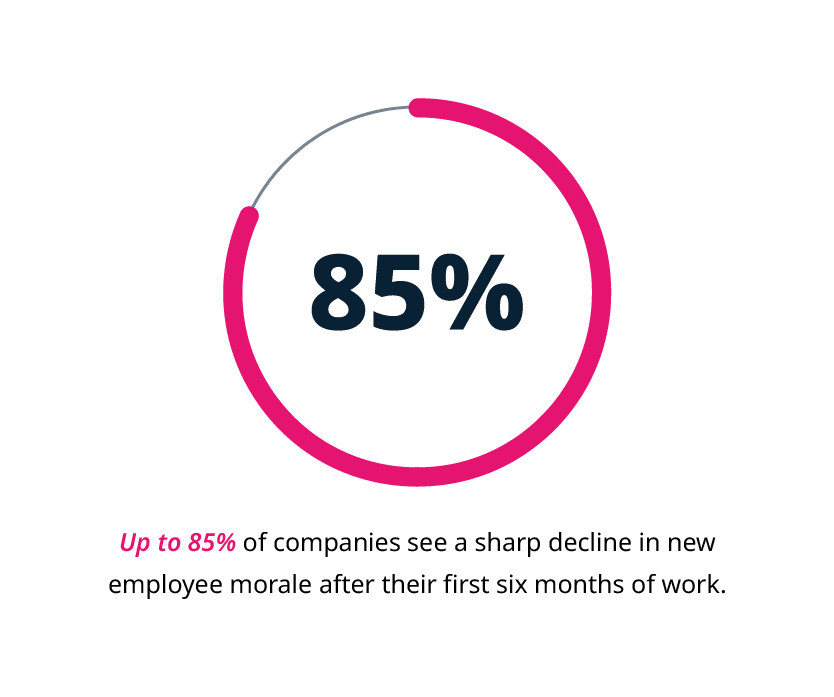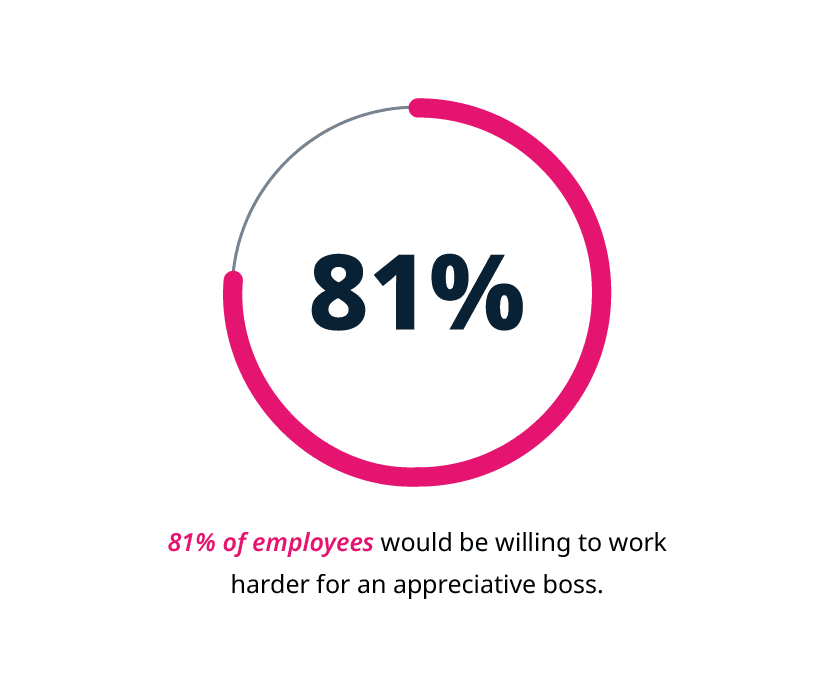Meaningful Leadership: A New Model For Employee Engagement
Become a manager with a difference
Do you remember how you felt on the first day of your first job?
When first-time employees join your company, they’re passionate, eager, excited, and perhaps a bit overwhelmed. These early levels of stress-induced productivity have been proven not to last. After six months, approximately 85 percent of companies noticed that morale dropped sharply for new employees. This decline has been attributed to employees:1
- Not feeling engaged with the team
- Not seeing the value of their work
- Not finding their work mentally stimulating
- Not feeling heard
- Being distracted by feelings of anxiety, depression, or anger
- Feeling as though perks, benefits, and pay are unfair
How can you improve employee engagement?
Implement research-backed techniques
In order to help employees remain engaged and improve morale, there are many techniques and strategies that can be utilized to sustain employee engagement.
Stanford Professor, Jeffrey Pfeffer, who is considered one of today’s most influential management thinkers, attributes the responsibility of this employee unhappiness to management:
“Without data, it is impossible to manage anything, including employee well-being and engagement. That’s why it’s critical to be smart about gathering feedback,” Pfeffer says. “Recently, Gallup published five ‘pulse’ survey questions that any company can use to make sure they’re meeting the needs of their workers during this crisis. If management is failing to properly communicate or build confidence among employees, they can rethink and test out new strategies and practices before soliciting more feedback down the road.”2
You have the opportunity as a leader to implement research-backed techniques that will not only ensure an engaged and productive team, but also will grow your abilities as a people manager.

Show your employees appreciation and recognition
Taken from Dan Ariely’s book, Payoff: The Hidden Logic That Shapes Our Motivations, Ariely speaks about an experiment conducted at Intel in Israel.3
Employees at Intel received one of three emails at the beginning of the week, each saying something different:
- You’ll get a cash bonus.
- Your boss will give you a rare compliment.
- You’ll get a voucher for free pizza.
After the first day, those who received the pizza email showed a 6.7% increase in productivity, and those who received the email about getting a compliment increased their productivity by 6.6%. The monetary bonus only saw a 4.9% increase in productivity.
By the end of the week, the recipients of the monetary bonus had a drop in productivity as that group of employees performed worse than those in the other groups.
So what can you learn from this case study? People are not motivated by money alone. In fact, an appreciative boss was found to inspire 81 percent of employees to work harder.4

Use communication to build a strong team through employee engagement
A study from MIT’s Human Dynamics Laboratory revealed the most important element of predicting the success of a team is how well the team communicates with each other and with their manager. Three simple communication strategies you can implement right now include:5
1. Build energy
There are many ways employees can communicate. Energy, in this instance, describes how many and what kinds of communication happens between members of a team. Face-to-face communication was the most effective, followed by phone and video calls. Least effective were email and text. Managers and other employees can increase energy by seeking face-to-face communication.
2. Encourage engagement
When team members communicate in high-energy ways, this energy is distributed across the team. Better engagement happens when there is strong communication. One way engagement can be encouraged is by scheduling breaks for the whole team at the same time.
3. Communicate with other teams
Teams perform at a higher level when members explore by engaging with those outside of their teams. This can be done by seating teams near one another for lunch.
Encourage team-based microcultures
The culture of a team within an organization is incredibly important when setting the stage for success. When the workplace is broken down into small teams, the culture of each team needs to be nurtured. Then, as the teams come together, they will continue working for the greatest good and the good of the company. By having dynamic and small culture groups, a company can be agile, efficient, and energetic.
“Marcus Buckingham and Ashley Goodall have shown that people tend to care much less about which firm they work for than about which team they’re on,” Nicolas Lovegrove of Harvard Business Review says.”6
As a manager and leader, you need to set the tone of the culture in your team. Some employee engagement ideas include:
- Encouraging a culture of inclusivity7
- Reshuffling seating arrangements to encourage employees to interact
- Creating projects or tasks that require the whole team to work together
- Sitting with the clique during a lunch break and inviting someone who’s often excluded8
What does successful people management look like?
If you, as a manager, step into work every day with the primary goal of contributing to the organization’s success, your first strategic management task of the day should be to head straight to your team: establishing a unified culture, engaging with them, meeting with them, and recognizing their contributions.
Want to create meaningful leadership within your organization? Nurture forward-thinking managers with online short courses from the world’s leading universities.
Nurture forward-thinking managers with online short courses from the world’s leading universities.
- 1 (Jun, 2020) ‘6 Reasons why even good employees lose motivation’. Retrieved from Primalogik.
- 2 Pfeffer, J. (Apr, 2020). ‘Jeffrey Pfeffer: COVID-19 changes everything – and nothing – about managing workers’. Retrieved from Insights by Stanford Business.
- 3 (May, 2021). ‘Science says pizza can make you more productive at work’. Retrieved from Australian Men’s Health.
- 4 Gostock, A. & Elton, C. (Mar, 2020). ‘Opinion: The 1 thing workers want more of – and it’s not money’. Retrieved from MarketWatch.
- 5 (Oct, 2020). ‘Common characteristics of high-performing teams’. Retrieved from Act.
- 6 Lovegrove, N. (Dec, 2020). ‘3 Tenets of a strong remote culture’. Retrieved from Harvard Business Review.
- 7 Khanjani, N. (Jan, 2022). ‘Fostering a culture of inclusion from the start’. Retrieved from Forbes.
- 8 Herrick, J. (Nd). ‘Why team lunches need to be a part of your work culture’. Retrieved from Benchmark One. Accessed January 19, 2022.